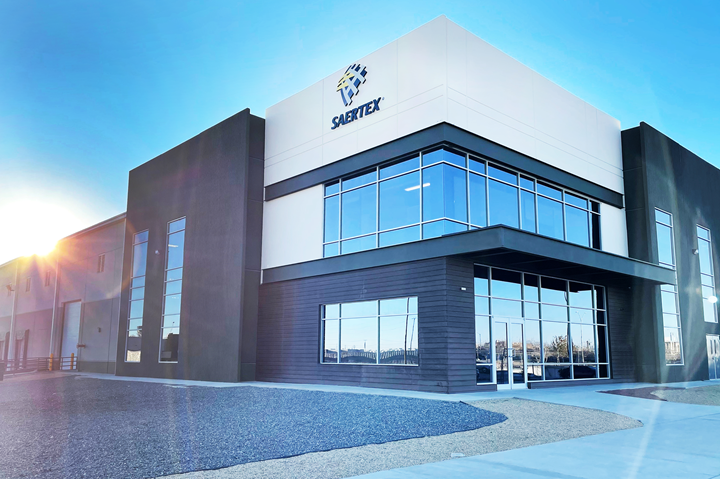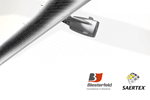Saertex opens production facility in Mexico for textile reinforcements
Saertex Mexico S.A. de C.V plant will begin production of multiaxial glass fiber noncrimp fabrics immediately, with goals to add production lines for expansion into wind power sector.

Photo Credit: Saertex
On Feb. 15, textile reinforcement materials manufacturer Saertex (Saerbeck, Germany) has opened its production facility in Ciudad Juárez, Mexico, the company’s 17th global site. Production of multiaxial glass fiber noncrimp fabrics for lightweight construction applications will commence immediately. Saertex says the site benefits from its proximity to key customers that produce rotor blades for the wind power sector.
The facility, under newly founded Saertex Mexico S.A. de C.V., covers a total area of 15,000 square feet, with 9,000 square feet dedicated to the factory floor. Fifty-four new jobs will be created.
“Our strategic goal is to ensure our customers benefit from a reliable supply chain coupled with regional, sustainable sourcing via the global Saertex production network,” explains Christoph Geyer, CEO of the Saertex Group. “Our new site in Ciudad Juárez represents an important milestone for achieving sustainable cooperation with our customers in the composite industry, including the wind sector, which is strongly represented through its rotor blade manufacturing facilities in Mexico. By strategically shifting manufacturing capacity from the U.S. to Mexico, we are simultaneously strengthening our U.S. plant in Huntersville, North Carolina, which is now able to focus its competencies on our emerging business in the field of industrial applications.”
Machinery and equipment have already been installed at the Saertex plant in Mexico, while processes have been successfully mapped in the SAP ERP system and digitally connected with the other sites in the global production network. Over recent weeks, the Saertex Mexico workforce has also successfully completed training.
“Our machines are up and running, the processes are established and customer qualification measures are well advanced,” reports Dietmar Möcke, CTO at Saertex. “This is the result of excellent cooperation between our customers and our international project team. We were only able to realize this project so successfully — especially in the face of tougher conditions caused by the pandemic — with the support of the specialists at Saertex USA and Saertex in Saerbeck.”
In addition to commencing serial deliveries of multiaxial fabrics, an expansion of the plant in Mexico is already in preparation. The intention is to manufacture additional product lines at the Ciudad Juárez site in order to offer customers in the wind power sector a wide range of different material technologies for rotor blade manufacture.
Related Content
-
JEC World 2022, Part 3: Emphasizing emerging markets, thermoplastics and carbon fiber
CW editor-in-chief Jeff Sloan identifies companies exhibiting at JEC World 2022 that are advancing both materials and technologies for the growing AAM, hydrogen, automotive and sustainability markets.
-
Materials & Processes: Fabrication methods
There are numerous methods for fabricating composite components. Selection of a method for a particular part, therefore, will depend on the materials, the part design and end-use or application. Here's a guide to selection.
-
Materials & Processes: Composites fibers and resins
Compared to legacy materials like steel, aluminum, iron and titanium, composites are still coming of age, and only just now are being better understood by design and manufacturing engineers. However, composites’ physical properties — combined with unbeatable light weight — make them undeniably attractive.
















